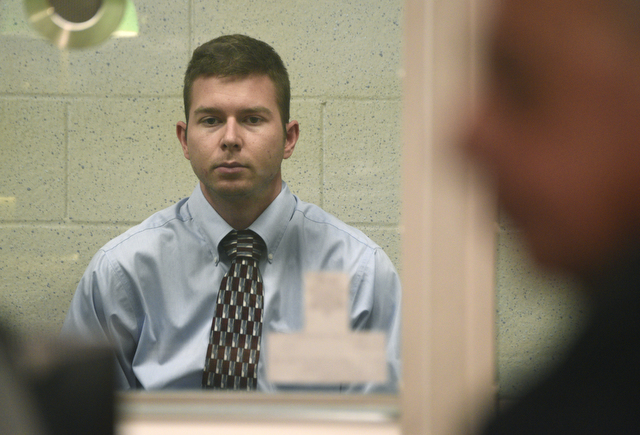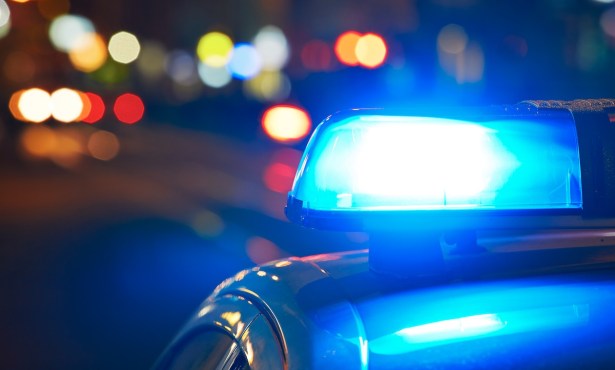Defense Team Raises Doubts in Case Against Accused Han Family Killer
Pierre Haobsh’s Attorneys Question Reliability of Cell Phone Data Records

On Thursday, the defense team of Christine Voss and Michael Hanley began poking holes in the prosecution’s case against Pierre Haobsh — the man accused of murdering Santa Barbara herbalist Henry Han; his wife, Jennie Yu; and their 5-year-old daughter, Emily Han, in 2016 — raising questions about the reliability of cell phone records mapping out Haobsh’s whereabouts leading up to and following the day of the killings.
Investigator Jeff Ellis, who has been testifying for the past few days of the trial in Judge Brian Hill’s courtroom, was brought up once again to discuss the cell phone records and internet history that were used to connect Haobsh to several locations in the case.
Voss brought up concerns with the records’ viability, asking if the screenshots could have been manipulated by photo-editing software, or if there could be any hacking or contamination of the files during transfer to the investigators’ computers.
She questioned whether he was physically there when the data was transferred from the original hard drives, and Ellis said that he was not present, but that current technology has very little chance of being cross-contaminated in the ways Voss described.
The defense also questioned the accuracy of locating cell phones via cell tower connections. She said towers could be down or overloaded, and there could be a number of other factors that would obstruct a signal or cause a cell phone to connect to a tower that wasn’t physically closest.
Voss asked Ellis whether these obstructions were possible, and if that could mean that the reported data would be compromised. “It could be a factor; in theory, that’s true,” Ellis said. “But in practice, it’s different.”
Voss brought up several types of cell towers, each with a different range, and how that could affect the reliability of the evidence tying Haobsh to the locations in the prosecution’s timeline.
She presented three aberrations in the cell report that would have placed Haobsh in two locations hundreds of miles apart at similar times. One shows a connection to a tower in Oxnard and another in Oceanside just minutes apart; the other two show similar inconsistencies with connections in Santa Barbara and the Newbury Park area within a very narrow timeframe, which Voss describes as “physically impossible given the current abilities of human travel.”
Ellis said these aberrations could be explained and were not out of the ordinary in cell phone records, and could be on account of the range of towers or connectivity levels.
Sign up for Indy Today to receive fresh news from Independent.com, in your inbox, every morning.
Voss asked Ellis if he had looked for any evidence of hacking or malware when he analyzed the records, which he said was not something that was normally done. “Nothing jumped out at me,” he said, adding that signs of hacking and malware were extremely hard to find, even when analysts know what they are looking for.
When prosecutor Ladinig questioned Ellis, he brushed off the defense’s contention that the digital data could be manipulated or that transferring and storing data on different devices could “cross-contaminate” information. “That just isn’t what happens,” he said.
Ladinig said that other than the three aberrations mentioned by the defense, the “overwhelming majority has been reliable.” He said the investigation included other physical and digital evidence tying Haobsh to several locations that fit the timeline — surveillance footage, receipts, and a photo of Han’s personal information recovered from Haobsh’s phone that included GPS metadata pinning the location to Han’s Goleta home.
There also were multiple readings, Ladinig said, from the same locations that would place Haobsh in specific places important to the prosecutors’ timeline on the days leading up to and following the murders.
The defense also called up Haobsh’s friend Nico Fricchione, who appeared via Zoom. Fricchione met Haobsh in Arizona, and he testified that he had several conversations about Haobsh helping him create a noise suppressor for pneumatic nail guns. Fricchione and his father owned a construction company that dealt with prefabricated units built in a warehouse factory, and Haobsh had consulted with them about early research and development to make a device that would make the nail guns quieter in the factory.
Hanley contended that the materials for a homemade suppressor found in Haobsh’s car were for that project, though during cross-examination, Friccione told prosecutors he had never asked for or received any plans or prototypes past the initial request, and that the project was “short-lived.”
Voss and Hanley plan on calling up two witnesses before closing arguments: a firearms expert who was the point of contention for prosecutors, who said they had not been provided proper discovery on the extent of his expertise; and Haobsh himself, who is scheduled to speak for the first time early next week. The trial is expected to be decided by Judge Hill shortly after.
Support the Santa Barbara Independent through a long-term or a single contribution.


